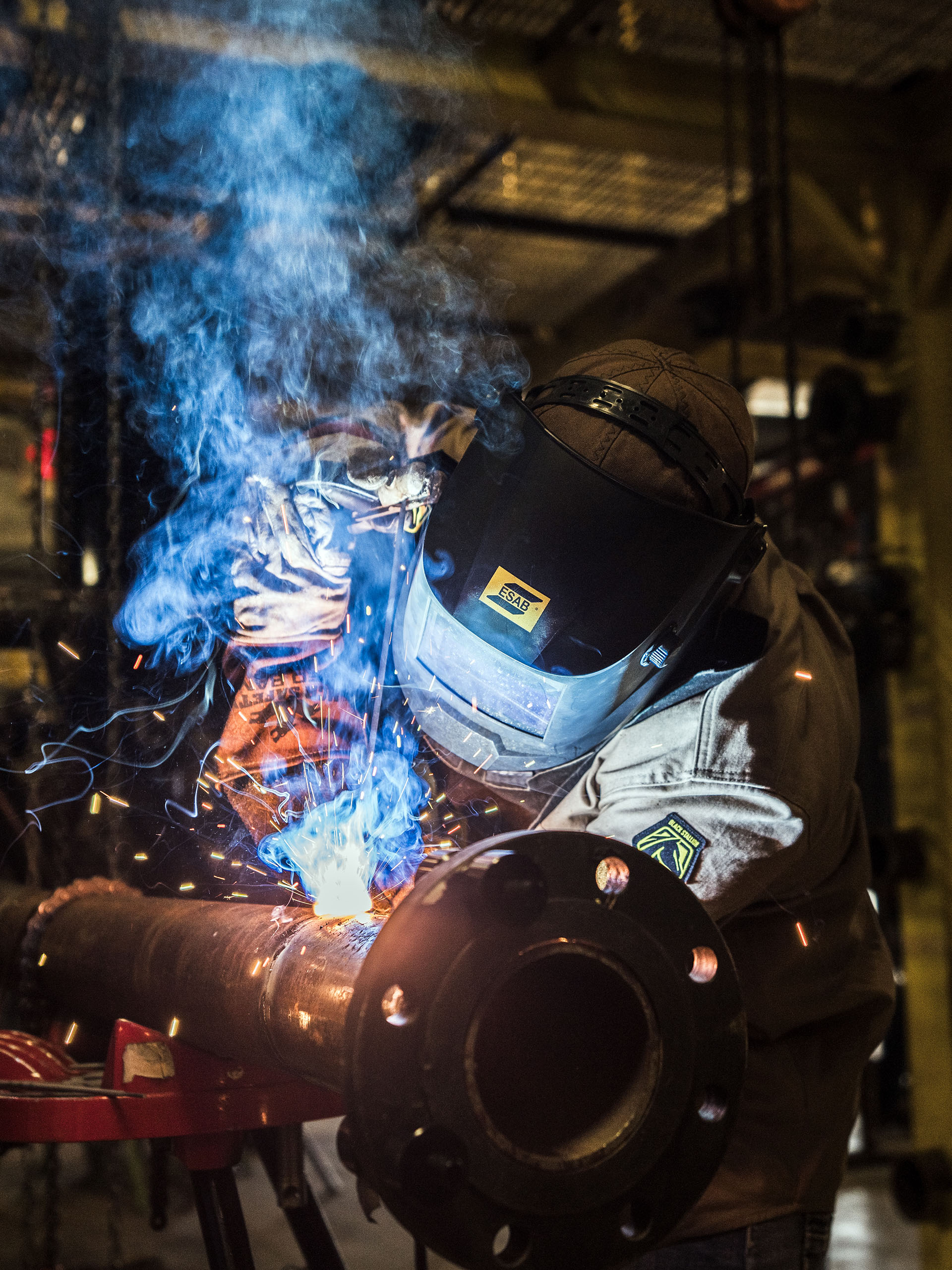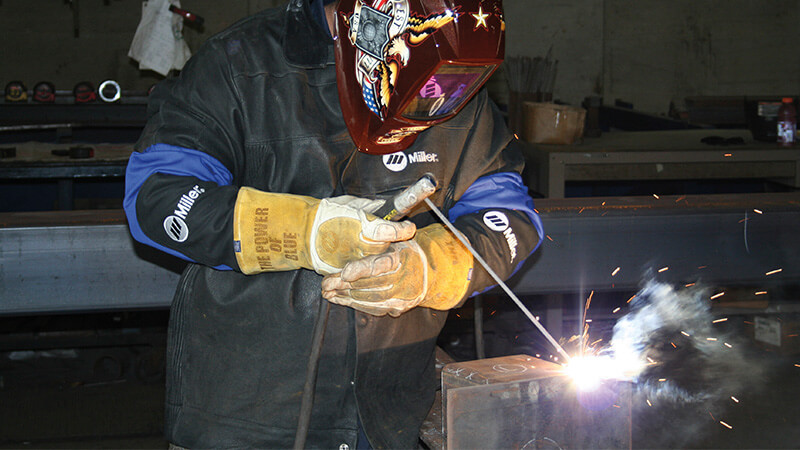Everything about Welding: Secret Insights Into Techniques and Best Practices for Success
Welding encompasses a selection of strategies, each fit for details materials and applications. Understanding these methods, such as GMAW, SMAW, and TIG, is necessary for accomplishing suitable outcomes. In addition, the ideal equipment and safety and security methods can not be overlooked. As prep work and repairing play critical functions in the welding process, mastering these elements can substantially improve the top quality of the end product. What are the vital elements that assure an effective weld?
Comprehending Different Welding Techniques
Welding strategies include a selection of techniques, each fit to specific applications and products. Among one of the most usual strategies are Gas Steel Arc Welding (GMAW), Protected Metal Arc Welding (SMAW), and Tungsten Inert Gas Welding (TIG) GMAW, also referred to as MIG welding, is preferred for its speed and flexibility, making it suitable for thin products. SMAW, or stick welding, is favored for its simplicity and effectiveness in exterior settings, especially with thicker steels. TIG welding provides accuracy and control, making it suitable for intricate work and non-ferrous metals (Montana Mobile Welding and Repair Fabrication). Each technique has its one-of-a-kind advantages and considerations, allowing welders to choose the best technique based on the task's demands, product kind, and wanted end results. Comprehending these techniques is necessary for effective welding
Essential Welding Devices and Tools
While various welding techniques require certain abilities, the right equipment and tools are similarly important for achieving high quality results. Crucial welding equipment consists of welding makers, which vary relying on the method-- such as MIG, TIG, or stick welding. Safety gear, including handwear covers, aprons, and helmets, assurances security and comfort throughout the procedure. Furthermore, clamps and fixtures aid secure products in place, ensuring accuracy in welds. Consumables like welding rods, cable, and shielding gas are also essential components that affect the top quality of the weld. Moreover, devices such as grinders and cutters help with surface prep work and post-weld finishing, adding to a specialist result. Spending in top notch tools eventually improves the effectiveness and efficiency of welding projects.
Safety Practices in Welding
Appropriate safety and security practices are necessary in the welding market to safeguard employees from possible risks. Welders need to put on appropriate individual protective devices (PPE), including headgears with appropriate shading, gloves, and flame-resistant apparel. Adequate air flow is crucial to lower direct exposure to harmful fumes and gases created throughout the welding procedure. Furthermore, workers need to be trained in the correct handling of welding tools to prevent accidents. Fire safety procedures, such as keeping combustible products away from the welding location and having fire extinguishers conveniently offered, are necessary. Routine examinations of equipment and offices can assist determine possible hazards prior to they lead to mishaps. By sticking to these safety techniques, welders can produce a much safer working setting and lessen threats linked with their profession.
Preparing Materials for Welding
Preparing materials for welding is a crucial action that significantly influences the high quality and integrity of the end product (Welding). Correct prep work involves cleansing the surfaces to remove contaminants such as oil, dust, and rust, which can endanger the weld. Strategies such as grinding, sanding, or making use of solvents are frequently used to accomplish a tidy surface. Additionally, making certain that the materials fit together snugly is necessary; spaces can cause weak welds. It's additionally essential to take into consideration the placement and positioning of the components, as this will certainly impact the simplicity of welding and the last outcome. Finally, selecting the suitable filler material and ensuring compatibility with the base steels is crucial for attaining strong, long lasting welds
Tips for Getting High-Quality Welds
Achieving top quality welds needs interest to detail and adherence to ideal techniques throughout the welding process. Appropriate joint prep work is essential, making certain surfaces are complimentary and tidy from impurities. Choosing the proper filler material and welding strategy based upon the base steels is essential for ideal bonding. Keeping regular traveling rate and angle while welding can advertise and protect against flaws uniformity. Furthermore, controlling warmth input is crucial; extreme heat can bring about bending and compromised joints. Regularly checking the welds during the procedure enables immediate modifications if needed. Ultimately, employing ideal post-weld treatments, such as cleaning and tension relief, can improve the sturdiness and stability of the weld, eventually ensuring a successful result.
Fixing Typical Welding Issues
Welding typically offers obstacles that can affect the quality and integrity of the end product. Usual issues such as porosity, inconsistent investigate this site weld beads, and overheating can arise, each requiring certain repairing techniques. Recognizing these problems is essential for welders to boost their skills and accomplish excellent results.
Porosity Issues Explained
Although porosity can usually be ignored, it remains a vital problem in welding that can jeopardize the integrity of a finished item. Porosity describes the presence of small gas pockets within the weld bead, which can deteriorate the joint and lead to premature failure. This trouble generally emerges from impurities, dampness, or inappropriate securing gas protection throughout the welding process. To minimize porosity, welders must verify that the base materials are clean and completely dry, use ideal securing gases, and maintain regular welding parameters. Consistently checking the devices and atmosphere can also aid identify potential problems before they manifest in the weld. Addressing porosity efficiently is crucial for achieving strong, resilient welds that see this here meet quality requirements.

Irregular Weld Beads
Inconsistent weld beads can greatly affect the high quality and toughness of an ended up product. Different aspects contribute to this problem, consisting of incorrect traveling rate, incorrect amperage setups, and irregular electrode angles. When the welder moves as well quickly, a bead might show up narrow and do not have infiltration, while moving as well slowly can trigger excessive accumulation. Additionally, making use of the incorrect amperage can lead to either undercutting or too much spatter, both of which concession weld honesty. The welder's strategy, such as inconsistent torch motion, can likewise cause uneven grain look. To mitigate these issues, welders must concentrate on maintaining constant, regulated activities and making sure proper equipment setups to achieve uniformity in their welds. Uniformity is key to attaining solid and trustworthy welds.
Overheating and Warping Issues
Extreme warm throughout the welding procedure can cause significant overheating and warping problems, impacting the architectural honesty of the workpiece. These problems frequently materialize as distortion, which can compromise positioning and fit-up, making more setting up challenging. Elements contributing to overheating include the choice of welding parameters, such as voltage and travel rate, as well as the sort of product being welded. To mitigate these problems, welders must maintain regular traveling rate and proper warm input while keeping an eye on the workpiece temperature. Additionally, preheating or post-weld warm treatment can aid relieve stresses created by rapid air conditioning - Belgrade. Regular inspection and adherence to best techniques are crucial in avoiding overheating and making certain the durability and dependability of bonded structures
Often Asked Inquiries
What Are the Profession Opportunities in the Welding Market?
The welding industry offers varied career possibilities, including settings as welders, educators, designers, and assessors. Specialists can function in production, construction, aerospace, and auto sectors, benefiting from solid need and competitive salaries in numerous functions.
Just How Can I Boost My Welding Speed Without Compromising Quality?
To enhance welding speed without sacrificing high quality, one need to exercise efficient techniques, maintain equipment, maximize setups, and improve hand-eye sychronisation. Routine training and seeking comments can likewise considerably add to achieving faster, high-quality welds.
What Qualifications Are Readily Available for Welders?
Many accreditations exist for welders, consisting of those from the American Welding Culture (AWS), the browse this site National Center for Building Education and Research Study (NCCER), and various industry-specific organizations. These qualifications enhance employability and show skill proficiency.
Just How Does Welding Affect the Characteristics of Metals?
Welding influences the residential or commercial properties of steels by changing their microstructure, which can result in modifications in toughness, hardness, and ductility. Warmth input and air conditioning prices throughout the process substantially influence these material characteristics.
Can I Weld Dissimilar Metals With Each Other?
